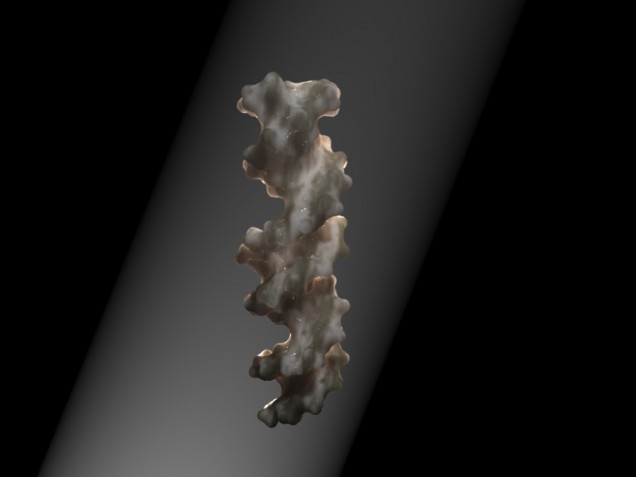Category: Alzheimer’s Disease
The Paradox of Cell Death
“Apoptosis” is Greek word that literally means “falling of the petals from a flower or leaves from a tree” [1]. This description contrasts with the typical textbook definition: apoptosis is programmed cell death, caused by the Diablo gene. The literal translation stresses the evolutionary significance and benefit of apoptosis. While apoptosis can be detrimental, it is also important to understand the reason why nature would select for such a seemingly negative process that in fact has its benefits.
Apoptosis is important for maintaining a balance between cell proliferation and cell death. Families of proteases called caspases are responsible for cell death. Initiator caspases activate other executioner caspases, which continue to activate other executioner caspases. The Bcl2 family of proteins can either activate or deactivate caspases. Specifically Bax and Bak facilitate cell death because they cause cytochrome C to be released, leading to the assembly of the apoptosome. Another process for cell death is called necrosis – when a plasma membrane ruptures thus spreading the contents of the dying cells. This is different from apoptosis because typically phagocytes recognize cells undergoing apoptosis and engulf the cells and its contents, thus preventing them damage to other surrounding cells [2].
A protein relevant to apoptosis is the transcription regulator protein p53, which codes for a CDK inhibitor protein called p21 (a Cdk inhibitor protein). In response to DNA damage in the G1 phase of the cell cycle, p53 levels increase and the generated p21 binds to the G1/S-CDK to stop the cell from reaching the S phase. In cases where DNA damage cannot be repaired, p53 causes apoptosis because it is better for the cell cycle not to proceed with the damaged DNA. If p53 is nonfunctional, this has serious consequences for the cell because its leads to the replication of damaged DNA, leading to mutation and the generation of cancerous cells [2]. I find it astonishing that an issue with the expression of one protein, in this case p53, can lead to development of life-threatening diseases like cancer.
Furthermore, apoptosis plays an interesting role in Alzheimer’s disease (AD). AD is caused by AB plaques, which are aggregates of a misfolded version of the amyloid precursor protein (APP). AB is generated when APP is cleaved by B-secretase (or BACE) in the amyloidogenic pathway. Current research shows that the death of neuronal and glial cells in the cerebral cortex and hippocampus is related to the cognitive decline that is characteristic of AD [3]. Only part of this neuronal cell death is caused by apoptosis, meaning the rest is mediated by necrosis and other different forms of apoptosis. Research implies that Bak and Bad rather than Bax (a part of the Bcl2 family) [3], therefore a potential AD treatment could involve a method for inhibiting the expression of Bak/Bad.
Cancer can be caused by a lack of apoptosis in harmful cells, thus allowing them to proliferate and cause tumors. Interestingly, the p53 gene is found in half of all human cancers [2]. Typically in tumors scientists have observed that the main regulators of the cell cycle are altered, thus impacting aspects of proliferative control such as cell cycle checkpoints and how the cell responds to DNA damage. Therefore, a possible cancer treatment could involve finding a way to induce tumor-selective cell death. However, a challenge with this approach is finding a way to do so without harming normal cell function or normal cell homeostasis [4]. If scientists could discover a molecule specific to tumor cells or molecules that are regulated differently in tumor cells than in normal cells, this approach could be potentially beneficial.
~ Srijesa Khasnabish
Sources
[1] Zhivotovsky, B (2002) From the Nematode and Mammals Back to the Pine Tree: On the asdfasdfDiversity and Evolution of Programmed Cell Death Cell Death and Differentiation 9, asdfasdf867-869 doi:10.1038/sj.cdd.4401084
[2] Alberts, Bruce (2014) Essential Cell Biology. New York: Garland Science
[3] Shimohama, S (2000) Apoptosis in Alzheimer’s Disease – An Update Apoptosis 5, 9-16
[4] Kasibhatla S, Tseng B (2003) Why Target Apoptosis in Cancer Treatment? Molecular asdfasdfCancer Therapeutics 2, 573
One Step Closer: New Alzheimer’s Gene Discovered
Alzheimer’s Disease (AD) is the most prevalent form of dementia, and sixth leading cause of death in the US, affecting 60-80% of individuals 65 and older. The hallmark symptom of Alzheimer’s Disease is serious memory loss attributed to widespread cell death and loss of cortical mass. Treatments are currently used to stop and slow the progression of the disease, and improve patients’ quality of life as there is no cure for AD.
The molecular basis of neurodegeneration in Alzheimer’s Disease is in amyloid beta plaque formation and the accumulation of neurofilaments. Studies have shown that aggregates of -amyloid form amyloid plaques that are predominantly found in the brains of Alzheimer’s patients. The accumulation of amyloid plaques in the brain impairs neuronal function and leads the eventual death of cells.
Recently, researchers have pinpointed a gene involved with the immune system, IL1RAP, that increases the risk of developing AD. In a genome-wide analysis of over 500 individuals, those with the IL1RAP variant were found to have a greater accumulation of amyloid plaque over a two year period - independent of the previously highly speculated AD-linked allele APOE ε4.
IL1RAP, or Interleukin-1 receptor accessory protein, is associated with the immune system, and often regulates microglial activity (“the brain’s ‘garbage disposal system’.”) Studies have shown that microglial cells gather around plaques and clear amyloid deposits. The presence of IL1RAP displays altered microglial activity, featuring faster accumulation of amyloid plaque, increased cognitive decline, and increased cortical decline. Focusing on the IL1RAP pathway may be imperative in inducing plaque destruction, therefore halting the progression of Alzheimer’s Disease. Researching this pathway may be key in eventually creating a cure.
-Kavya Raghunathan
Sources
(Original Study) GWAS of longitudinal amyloid accumulation on 18F-florbetapir PET in Alzheimer’s disease implicates microglial activation gene IL1RAP- http://brain.oxfordjournals.org/content/138/10/3076
New Gene Linked to Amyloid Plaque Buildup in Alzheimer’s Disease Identified- http://neurosciencenews.com/il1rap-alzheimers-apoee4-genetics-2826/
New Alzheimer’s Gene Identified- http://www.medscape.com/viewarticle/852556
What Is Alzheimer’s?- http://www.alz.org/alzheimers_disease_what_is_alzheimers.asp
Image by user Freesci via Wikimedia Commons

